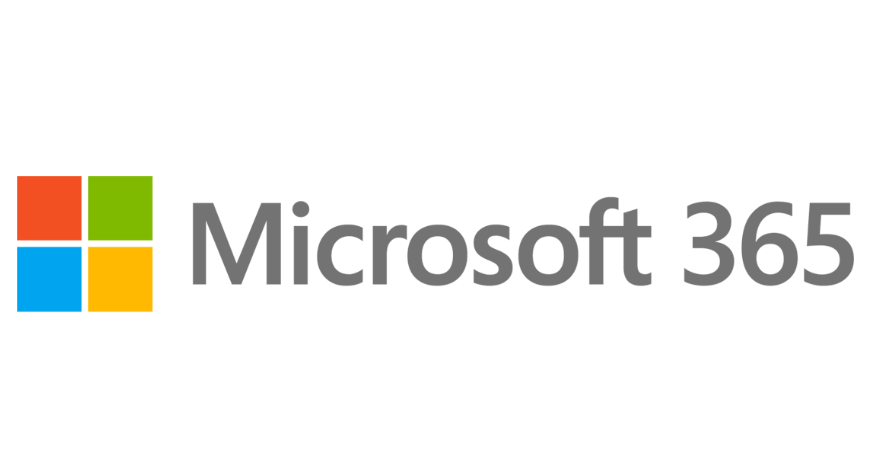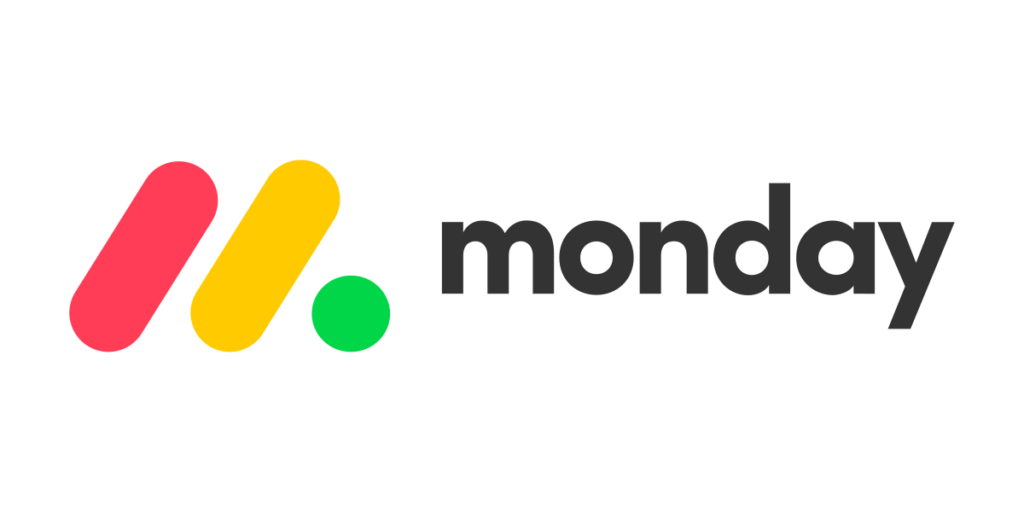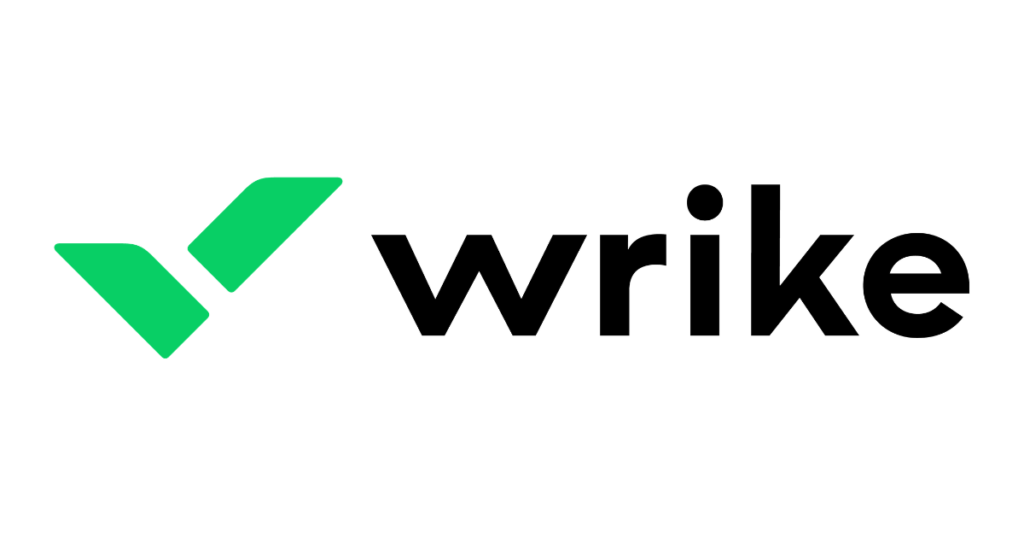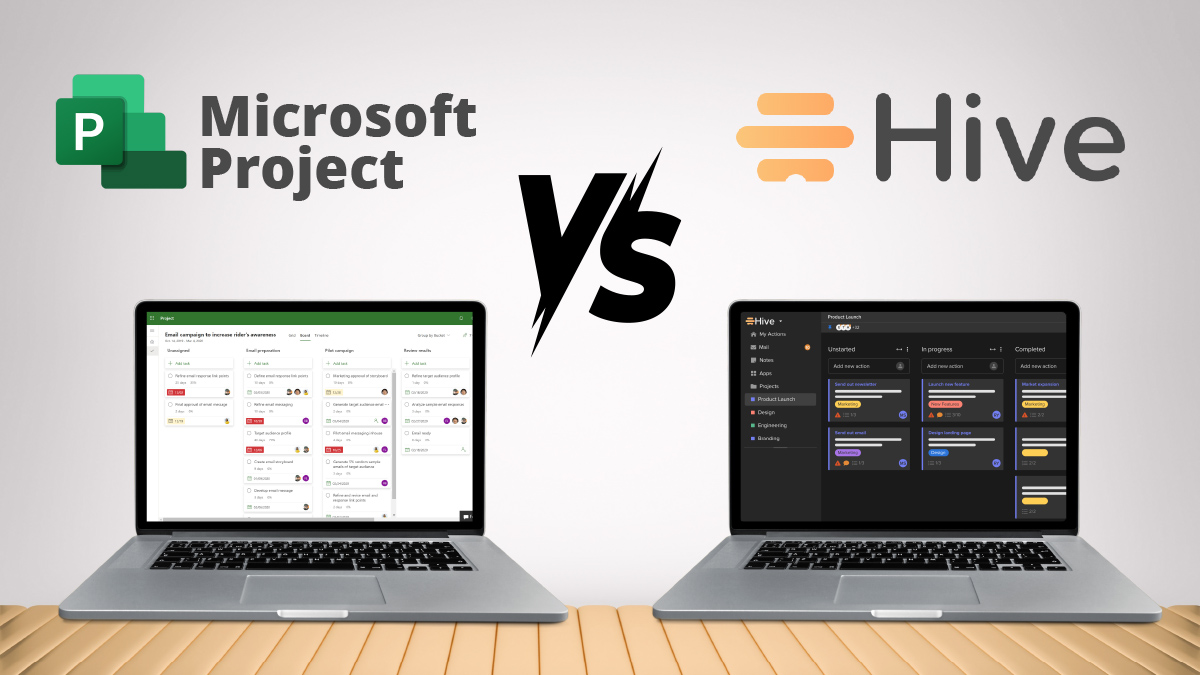Any business’ success depends on effective project management. Choosing the finest project management solutions has become increasingly challenging for enterprises as technology has advanced.
Microsoft Project and Hive are two of the most popular options. Both programs are worthwhile, but they also differ greatly from one another.
To assist you in selecting the project management tool that is best for your company, we will compare and contrast these two programs in this post. To determine which software is the best fit for you, whether you’re a project manager or a team member, read on.
>> Get Started With Microsoft Project >>
Microsoft Project: Best for Robust Project Planning

Microsoft Project is an effective tool for managing projects by setting up a schedule, distributing tasks, and monitoring progress.
It’s the go-to tool for project managers because of the comprehensive suite of features it provides for tracking tasks, resources, and deadlines. Microsoft Project provides sophisticated reporting and data visualization tools besides a wide range of adaptable templates for different projects.
Unfortunately, it has a high learning curve and many choices, making it difficult for beginners to operate. When compared to alternative project management software, its price is high.
Pros of Microsoft Project:
- Project management software can plan and schedule well
- Integrates seamlessly with Excel, SharePoint, and Teams
- It includes advanced reporting and data visualization
- Provides customisable templates for various project kinds
- The software offers comprehensive resource management tools
Cons of Microsoft Project:
- Because of the software’s steep learning curve, new users may struggle
- Prices may be too high for small businesses and individuals
- Collaboration is limited compared to cloud-based project management applications
- Some people find the interface and features overwhelming
- The software is only available for Windows and web-based versions
>> Start Using Microsoft Project >>
Hive: Best for Collaborative Team Management
![]()
Hive is cloud-based software for managing projects and coordinating multiple teams at once. It has an intuitive interface that allows for simultaneous collaboration amongst all members of a team, regardless of their physical location.
Hive’s features include tasks, files, project templates, time tracking, and reports. Slack, Google Drive, and Zoom are just a few of the many third-party programs it works with, making it a great option for distributed teams.
Hive offers competitive pricing and a no-risk demo of its features. But, it can lack Microsoft Project’s more sophisticated tools for managing projects.
Pros of Hive:
- The software is intuitive and user-friendly
- It has real-time collaborative team management tools
- It also features an adaptable task management system
- It integrates with Google Drive, Slack, and Zoom
- Lastly, the software has fair cost and offers a free trial for interested consumers
Cons of Hive:
- This project management application lacks significant project planning functionality
- Offers fewer project templates capabilities than comparable programs
- Limited report and dashboard customization capabilities than comparable programs
- The tool may be straightforward for some users but insufficient for others
- The tool’s mobile app is restricted
Pricing & Features Comparison
Pricing
Microsoft Project offers a total of five pricing tiers, including two license-based on-premises software options and three cloud-based service packages. Each of the five options provides consumers with a unique set of perks and features.
- The basic functions of Microsoft Project, which enable project, task, and report management without any advanced features, are offered by Project Plan 1 for a monthly fee of $10 per user.
- Users of Project Plan 2 can access all the features found in Project Plan 1, as well as use the desktop app and assign project tasks to resources, for a monthly fee of $30 per user. Up to five Computers can be used with this license per individual.
- All the capabilities of Project Plans 1 and 2 are included in Project Plan 3, which costs $55 per user each month. It also includes tools for resource management and enterprise-level analytics.
Those that choose for an on-premises solution from Microsoft Project pay a flat rate for access to the desktop version of the software, with each user receiving a license good for a single computer.
The program offers solutions for larger organizations and has a variety of advanced capabilities, including connections to Project Online and Project Service, powerful analytics to choose project proposals based on strategic goals, and more.
In contrast, Hive’s pricing is more transparent, with three monthly or annual plans to choose from.
- The free, two-user Solo package offers unlimited service and access to a helpful online forum.
- The $12/month Team package allows an infinite number of users to have access to unlimited storage and time tracking. For an additional $4 per user each month, you can take advantage of a la carte services like team resourcing and SSO, enterprise security, and controls.
- The Enterprise package offers the most extensive services, such as contract and legal review in addition to all the capabilities of Teams. It has the most customizable add-ons, such as team resourcing and the flexibility to add external users. Enterprise rates are established individually for each customer according to their requirements.
Winner: Hive comes out on top when comparing price plans because it is inexpensive and offers extra features for a low monthly fee. Hive’s price is straightforward compared to Microsoft Project because it doesn’t distinguish between cloud and desktop licenses. Thus, Hive is more accessible to new consumers and smaller businesses.
>> Visit Microsoft Project for Pricing >>
Ease of Use
While making a choice between different pieces of project management software, it’s important to keep user friendliness in mind. Because it offers users a variety of perspectives, including board, grid, Gantt, and Kanban, making it simple to select the most appropriate view, Microsoft Project is a well-liked option.
The grid view, which displays projects as a list of tasks with due dates and status updates, is the most basic presentation format. The Kanban view provides a wealth of graphics, with tasks represented as boxes that can be dragged and dropped, the duration of which may be altered, and so on.
Hive’s user-friendly interface has won praise for its variety of available views (team, status, calendar,Gantt, label, and table, to name a few). Most people prefer the table views and Gantt because they illustrate the project chronology graphically and the tasks in a tabular format, respectively. Users of Hive have the flexibility to toggle between several perspectives, such as the Kanban board and the project board.
In addition to its multiple perspectives, Hive now provides mobile apps for on-the-go team member check-in and access to all core functionality. They can check in on the status of their projects and get their work done whenever and wherever they may be.
Winner: The Hive platform is the victor because it is simple to learn and use, offers several customization choices, and has an attractive and stress-free user interface.
Project Mapping
Project mapping is an integral part of any program designed for managing projects. It helps people see the big picture of a project and how everything fits together. When it comes to project management software, Microsoft Project is at the top of the class, offering customers robust project mapping and portfolio management tools.
Its flowcharts depict each stage of the project in detail. The auto-scheduled function is quite helpful since it generates a schedule for the project with no input from the user based on the project’s scope and the allotted time for each activity.
In addition, “Master Project Plans” can be created in Microsoft Project to consolidate numerous projects into one location. Gantt charts, grid views, and board views are all available for these projects.
Hive includes the aforementioned six perspectives besides a plethora of other tools for project mapping and portfolio management. Agile and Kanban are the two main methodologies employed by Hive.
Kanban is a method of managing workflows in which customisable task cards are used to indicate the many states of a process, such as “Not Started,” “In Progress,” and “Completed.” The cards may be shuffled around between the different phases with ease.
Hive also contains a capability for sprint planning, which lets users set up and manage sprints in accordance with the Agile approach it supports.
Hive’s Gantt chart view is a useful tool for seeing the schedule and progress of a project at a glance. This perspective places activities in a logical progression and draws attention to their connections.
Hive also provides a portfolio view, allowing users to keep tabs on all of their projects at once and making it easier to organize and prioritize them.
Winner: The Hive platform triumphs because of its user-friendly layout and extensive viewing possibilities.
>> Use Microsoft Project Management Software >>
To-Do List
To-do lists are an integral part of project management software since they aid users in setting daily priorities and staying on track with their work.
Hive offers a thorough to-do list feature, complete with milestones, so that users may enter tasks and set due dates. Users can break down larger activities into smaller ones, link together related actions, and add files as attachments.
In addition, users can collaborate by posting comments, making use of action templates, and creating links that can be distributed to other members of the team.
Microsoft Project includes extensive capabilities for making to-do lists besides its project management functions.
Users may quickly create and share to-do lists in a blank project file, which can then be expanded into full-fledged projects. One can create a hierarchy of tasks, link them to demonstrate interdependence, view them in a variety of ways, and so on.
The “Task Path” tool is one of Microsoft Project’s most notable features since it pinpoints the most important steps that must be taken to finish a project on schedule. Users also have the option of establishing due dates and other restrictions for tasks, allocating resources, and setting up repeating activities.
Winner: Defeating Microsoft Projects, which offers a more basic to-do list, thanks to Hive’s more robust feature.
Integration
Integration of project management software is necessary to increase effectiveness. Outlook, Excel, OneNote, and PowerPoint are just some of the other Microsoft Office programs that can be seamlessly integrated with Microsoft Project.
To facilitate easier project management and teamwork, the integration function permits users to centralize their work from many apps into a single dashboard.
Hive’s native APIs and connection with the popular Zapier program make it feasible to link to a broad variety of third-party applications.
Users may streamline their processes, automate routine operations, and foster collaboration by integrating Hive with widely used programs like Salesforce, Google Drive, and Outlook.
Hive has built-in support for Zoom and Slack, so that users may arrange and attend meetings without leaving the platform. Users can also take use of Hive’s connectors to automate processes like sending out notifications or reminders when a job is due.
Winner: The victor is Hive, which offers more app connectors than Microsoft Project does. These apps range from the widely used Google Drive and Salesforce to the lesser known FreshBooks for accounting and Marketo.
Customer Service
Webinars, videos, white papers, documentation, forums, and tutorials are just some of the online resources available from the sizable Microsoft Project community. Despite the availability of chat training, self-service resources are prioritized due to the inaccessibility of dedicated phone lines and email addresses for inquiries.
Hive’s customer support features are more obvious and accessible than those of Microsoft Project. Users can submit questions about integration capabilities or reports to the sales team in real time using an online form.
First-time and frequent users can reach out to the dedicated support email (help@hive.com) or the on-site web chat assistant with any questions they may have.
Anyone interested can sign up for a free trial and get a demo at their convenience. Hive technology provides demonstrations that are uniquely designed for each business. A customer service representative will get in touch with you when you fill out the online form with your contact information.
Winner: When compared to its competitor, Hive is widely regarded as having superior customer support. There are a number of ways to get in touch with them, including online chats and a dedicated phone line for Teams and Enterprise users.
They also have a helpful sales team that is happy to give a demonstration to potential customers and provide them with several options for signing up for a free trial.
>> Get Started With Microsoft Project >>
Microsoft Project Customer Reviews
Based on over 700 user evaluations on G2, Microsoft Project has earned a 4.1/5 star rating from satisfied consumers.
Several users give the program excellent marks for its ability to keep track of progress in complex projects, generate Gantt charts, and manage resources. Customers also like that the program works well with other Microsoft Office applications.
Several clients have complained about the software’s expensive price tag, lack of adaptability, and challenging learning curve. Some customers have complained that the program can be sluggish or glitchy at times.

>> Get Started With Microsoft Project >>
Hive Customer Reviews
Hive has been praised by its many satisfied customers, as seen by the 4.4/5 star average rating it has earned on the G2 website. Customers have praised the software for its intuitive design, which makes it simple to share information and monitor progress on projects.
Hive’s connection with popular platforms like Google Drive and Slack is particularly praised. Clients value the flexibility to select preferred project management approaches and modify procedures accordingly.
Hive’s customer service is well-known for its efficiency and helpfulness. Several customers have complained about the software’s price, and others have pointed out issues with the software’s reporting and analytics tools.


Winner: Hive has kept its top spot because of its highly satisfied customer base. The company currently has a 4.4/5 star rating on ReviewTrackers.
Microsoft Project vs Hive Project Management Software – Alternative Options
Monday.com

A visual and scalable platform for team collaboration, task management, and project management is offered by Monday.com, a cloud-based project management tool. Custom workflows, automation, Gantt charts, time tracking, and interfaces with well-known applications are some of its features.
It has various pricing levels based on the amount of users and features needed, and it’s user-friendly and expandable. Read the full Monday.com PM software review here.
>> Get Started With Monday.com >>
Wrike

Wrike is a solution for managing projects in the cloud. It streamlines operations, increases output, and fosters better cooperation to help groups accomplish more in less time.
The software offers capabilities including time tracking, project management, collaborative working, and thorough reporting. With Wrike’s adaptable dashboards and workflows, each team’s needs can be fulfilled, and the software’s automation technologies can reduce the amount of repetitive work that needs to be done.
In summary, Wrike is the ideal choice for companies looking to improve project management and increase output.
ClickUp

The cloud-based project management tool ClickUp provides a variety of capabilities, including team collaboration, task management, and project planning.
It comes with a task view that is fully customisable, a calendar, time tracking, Gantt charts, and integration with other well-liked programs. Users of ClickUp can choose from a number of flexible price plans based on the features and users they need.
The software’s user-friendly design makes it simple to manage complicated projects and collaborate with team members. Read the full ClickUp review here.
>> Get Started With ClickUp >>
Overall Winner
We suggest adopting Hive in comparison to Microsoft Project for small to medium-sized organizations.
Microsoft Project has a substantial foundation, but it has some serious shortcomings, especially in the areas of teamwork and information exchange.
Hive is substantially less expensive per user every month, thus cost is another crucial consideration. Hive works best for small to medium-sized businesses that don’t want to spend a lot of time learning a new project workflow tool.
>> Start Using Microsoft Project >>
Bottom Line on Microsoft Project vs Hive Project Management Software
Two of the best tools for managing projects are Microsoft Project and Hive. It’s important to weigh the pros and cons of each option.
It’s important to think about things like pricing, customer service, project planning, checklists, and usability. For instance, Hive may be the best choice because of its intuitive layout, built-in support for real-time collaboration, and straightforward interface. It heavily uses cloud-based applications and external interfaces to improve employee cooperation and productivity.
>> Get Started With Microsoft Project >>
 Sections of this topic
Sections of this topic
















